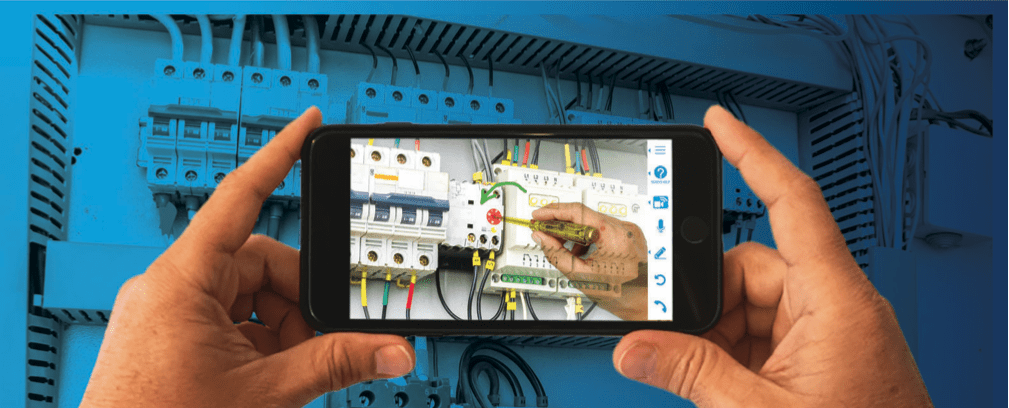Help Lightning Blog
Augmented Reality In Customer Service: What Outcomes Can We Expect?

Hubspot recently referred to augmented reality customer service as a “game changer,” and they’re not alone. Goldman Sachs predicts AR will soar to a $80 billion market by 2025, while Tractica expects the number of users in the augmented reality mobile space to hit almost 2 billion by the end of 2022. And as time goes on, it only appears more B2C and B2B companies are jumping on the AR train and looking to see how augmented reality can help to improve customer service.
As we covered in our post on AR examples to inspire your business, IKEA, Wayfair, and Lowe’s are just some retail stores that are deep-diving into self-serve AR, while bigger giants such as Microsoft, Walmart, and Apple are figuring out how it can help both their business model and others streamline key processes.
Okay, so AR has the power to change customer service (and for the better). But what can you take away from all this? Exactly what outcomes can we expect from AR in the next few years?
Let’s dive into the knock-on effects of augmented reality customer service, and what it means for clients and consumers alike.
1. Remote AR training
Visual learning is a big deal. And AR directly taps into the power of visual aids, examples, and models to improve understanding and impart information in a more easy to consume way.
Since AR’s very premise is to merge reality with virtual elements, then, it only follows that complex ideas can be made more real (and thus more intuitive) by taking them from an abstract format, to a more literal one on a customer representative’s screen.
When it comes to more technical product fixes, advanced equipment, or more nuanced customer problems – AR-powered training can vastly expedite the customer service training period.
This is in addition to reduced onboarding costs. When implemented organization-wide, instructors and trainers will be able to point to technical issues, highlight them, annotate, add comments, and more, from anywhere. That means fewer flights and less travel time for your trainers. In turn, trainees can use the same AR-backed features in order to improve lines of communication and reduce misunderstandings across the board.
2. Improved sales
Self-serve customer service has a few advantages for the average consumer: they can get answers to their questions quickly, on their own time, and they can feel more in control of an interaction.
Within the retail sector, we also see the augmented reality customer service trend toward self-serve as a result of AR-equipped smartphones: Lowe’s, Wayfair, Ikea, Nike, and Sephora all have some equivalent of a ‘try on’ feature. Whether that be for furniture, makeup, or clothes, they reduce risk by allowing customers to experiment with a product before purchasing. This increases peace of mind, lowers barriers to purchase, and improves ‘no fault found’ return rates.
Oh, and the best part? Customers are happier because they get increased transparency. It’s a win-win for everyone.
3. Improved first call resolution rates
We dive into how field service companies can improve first time fix rates using augmented reality more here, but the main takeaways are the following:
- AR-backed software reduces reliance on customers to adequately explain a complex issue. Instead, customer service representatives are better able to diagnose and remedy a problem themselves.
- Remote first service opens lines of communication between customers and service representatives. They can collaborate together to tackle an issue by sharing a “merged reality.”
- Field service technicians, as well as any other ‘boots on the ground’ personnel can use remote first software to connect with experts from across the country to remedy a problem, even if it’s especially difficult or in depth, thanks to the transparent, seamless experience AR provides.
4. Saved time and money
AR-backed software makes collaboration easier. It also allows actors with less understanding to gain the knowledge of more experienced staff. All this translates to fewer truck rolls, less travel time, fewer resources squandered, increased energy-efficiency, and less frustrated customers.
And all the resources that have been dedicated to remedying breakdowns in communication up until this point? They can be funneled to other, revenue-generating areas of your business.
5. Improved CSAT scores
CSAT scores essentially encompass how happy your customers are, from a holistic perspective, with your business. This includes customer service interactions, product or service quality, company values, and so on. This score then informs customer behavior, such as whether they will actively give good or bad reviews, if they will refer you to friends and family, and if they will repeat purchase from you. Here’s how AR-backed software can offer immense value in boosting your CSAT scores:
- Lowers time customers have to spend explaining an issue. This is a common complaint from consumers, especially if they have to be transferred to a different department or representative
- Increases phone fix rate KPIs
- Improves lines of communication and allows easier collaboration between customer service staff and customers themselves
All in all, augmented reality customer service has plenty of value to offer businesses across industries and departments. Especially as it relates to reducing customer churn, improving CSAT scores, and upping the quality of your customer service team to differentiate it (in the best way) from competitors – augmented reality has an important role to play in driving your long-term business objectives forward.
Want to learn more about the outcomes augmented reality customer service could offer your business? Schedule a no obligation demo.












